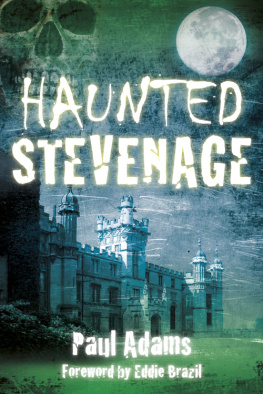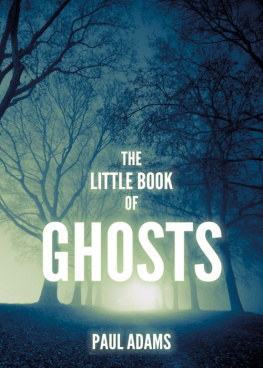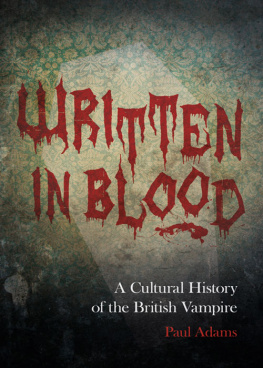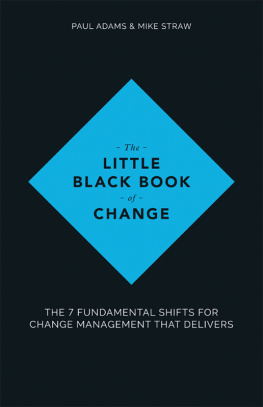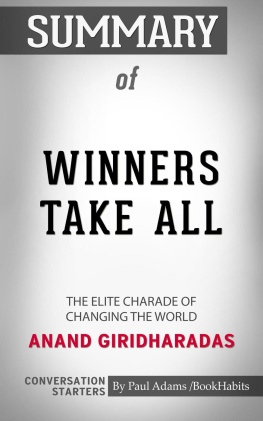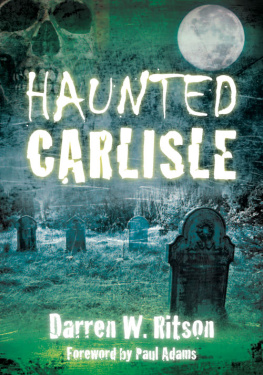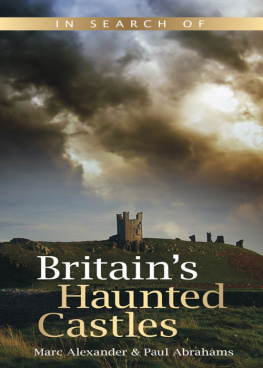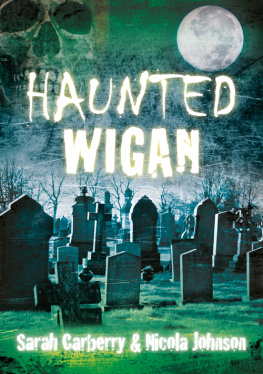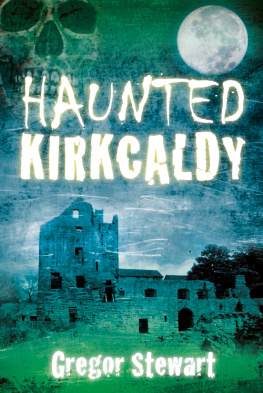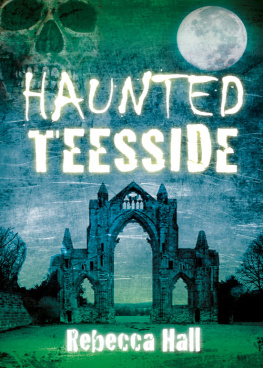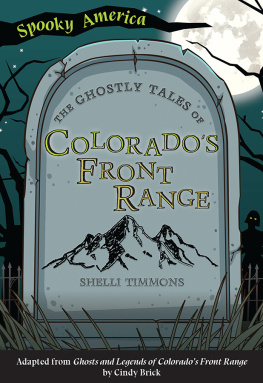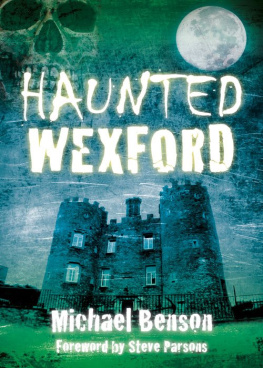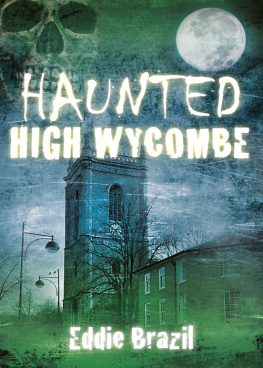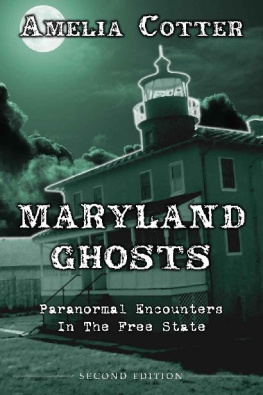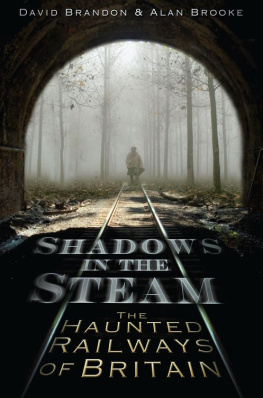

For Margaret Hughes
B EFORE we begin exploring the haunted history of Stevenage I would like to take a moment to thank the following people who have helped in various ways with the research and writing of this book: my old friend Eddie Brazil, who has given his usual support and encouragement to the project as well as writing the foreword; the late Peter Underwood, for allowing me to use material and photographs from his unique archive on British ghosts and hauntings; Paul Bowes from Book Castle Publishing and author Ruth Stratton who helped with copyright issues and allowed me to quote from published sources; Richard Corbelli and Chris Body for taking the time to discuss their involvement with the case of the Stevenage Poltergeist; Damien ODell and Ashley Knibb, who provided material from the case files of the Anglia Paranormal Investigation Society (APIS); Clare Fleck, archivist at Knebworth House, who provided historical information as well as modern ghostly experiences; Des Turner, for allowing me to reproduce his article on The Ghost of Ladys Wood; David Farrant, President of the British Psychic and Occult Society (BPOS), who revisited his investigation into the Minsden chapel haunting, and Andrew Fazekas and Bill King of the Luton Paranormal Society (LPS) for access to their investigation reports on Minsden; John Hope, who invited me around haunted Little Wymondley Priory; Jo Clarke and Karen Quinn, who helped with collecting new material, as did Oliver Pritchard at the Stevenage Comet ; Anya Ingarfill and Francesca Bartha for showing me around the much-haunted White Lion pub; and the staff at Stevenage Central Library who allowed access to their local studies collection. I would also like to thank all those Stevenage residents who spoke with me and allowed their original experiences to be included in this book. Where requested I have used pseudonyms but the identities of all those persons who described encounters with Stevenages ghosts are known to me. I would also like to acknowledge Matilda Richards and Emily Locke at The History Press for seeing the project through to publication with their usual efficiency; and Bev Creagh of the Luton News for her continuing interest in my work. My children Aban, Idris, Isa and Sakina deserve yet another acknowledgement for their patience and inspiration; and finally Leah Mistry, who knows the reason why
CONTENTS
G HOST what an enigmatic word. For over 2,000 years ghosts have continued to baffle, puzzle and fascinate mankind. Yet in todays computer- and mobile phone-obsessed world the true nature of those things that go bump in the night still evades scientific explanation. The Oxford English Dictionary defines the word ghost as the disembodied soul of a dead person haunting the living. This description would conveniently fit most peoples idea of the archetypal spook: a white-sheeted phantom which walks or glides the midnight corridors of a stately mansion or a romantic castle, moaning with clanking chains, completely unaware of being observed by the trembling spectator. However, years of research by paranormal investigators have revealed that there are many different types of what we would term a ghost. They include poltergeists, crisis apparitions, stone tape apparitions, atmospheric photographic ghosts, historical ghosts, and the curious enigma of phantasms of the living. All have their own peculiarities and ways of manifesting their presence or energy. If they all have one thing in common it is their rejection by established science as amounting to proof of an afterlife, being looked upon as preternatural phenomena which will eventually be shown, by scientific means, to have a rational and logical explanation.
In 1882, a group of academics and eminent thinkers established the Society for Psychical Research (SPR) with the express purpose of scientifically investigating ghosts, haunted houses and the claims of mediums and psychics to be able to contact the dead. Over one hundred years on, even though our understanding of certain aspects of the paranormal have become clearer, the question still remains, do ghosts exist and if so what are they? Can mediums communicate with those who have passed on? Are poltergeists really spirit entities, or are the movements of objects and furniture in poltergeist hauntings the manifestation of externalised stress and frustration of adolescents? Is it places or people which are haunted, or is it, as many sceptics would have us believe, all nonsense?
It would appear that the quest and need for answers to a phenomenon which has mystified generations since the first account of a haunted house was described by Pliny the Younger in Greece twenty centuries ago still continues today. Throughout human history paranormal phenomena has been reported from almost every country on earth, by people of every race, creed and colour. Reports of hauntings and poltergeists regularly make the pages of the tabloids, yet despite years of research by dedicated investigators and the accumulation of mountains of compelling evidence, many people continue to scoff at the idea of ghosts. Quantative evidence is acceptable in the disciplines of medicine or physics; yet it does not seem to be satisfactory to many people in regard to the subject of ghosts. Perhaps there is a reason for this.
Today most peoples perception and idea of ghosts stems from the reaction of the late eighteenth and early nineteenth-century Romantics against the advances made in science and the Age of Rationalism. The Romantics response against forward-thinking philosophies, unleashed firstly by the Renaissance and the Reformation, and subsequently by ideas and values which were fuelled by advances in knowledge, was to retreat into the world of the imagination. Education and technology had freed Mans mind from the tyranny of ignorance, but spiritually had left him with nowhere to go. Rationalism had robbed him of his mystical safe haven, and the needs of a changing world cast him into an industrial hell hole from which the only escape was the mind. As a rebuff to the cold hard reality of science, the writers of the period such as Horace Walpole, William Beckford, Mathew Lewis and Ann Radcliff populated their Gothic novels with ghosts, monsters and fantastical creatures which lurked and roamed within ruined abbeys, labyrinthine castles, dripping dungeons and moonlit graveyards. Supernatural fiction was the antidote to the banality of everyday existence and the fear that science would destroy Mans need for the supernatural. But, of course, the fictional ghost and those things which genuinely do go bump in the night are two completely different things.
Ironically, 200 years on from the Romantics hatred of science and rejection of the Age of Reason, modern-day scientists have moved that bit closer to establishing that ghosts, far from being romantic delusions or all in the mind may well represent evidence of the survival of the human personality, albeit in the form of a psychic recording. If there is any truth to the stone tape theory that physical surroundings can absorb an impression of violent or tragic events and later, under a combination of circumstances or conditions and with the right person present, play back these recordings one would certainly expect it to apply to many of the paranormal accounts contained in this book. For here the reader will encounter headless ghosts, phantom monks, violent poltergeists, spectral hounds, as well as invisible entities and ghostly children. Some may well be stone tape apparitions; others possibly historical photographic ghosts, atmospheric phantoms or elemental spirits. In some cases the incidents may well be a case of an overactive imagination. Only research and study will eventually help us understand the enigma of ghosts and reveal their true nature, for paranormal investigation is a journey of discovery and I can think of no one better qualified to guide the reader on an exploration of haunted Stevenage than the author of this book, paranormal historian, Paul Adams. I have known Paul for over ten years since we first met at Borley in Essex in September 2003 and to date we have co-authored three books on paranormal subjects together.
Next page
